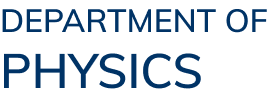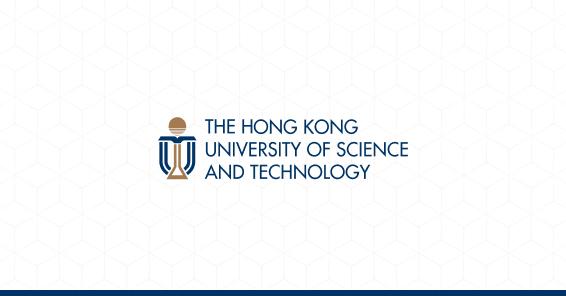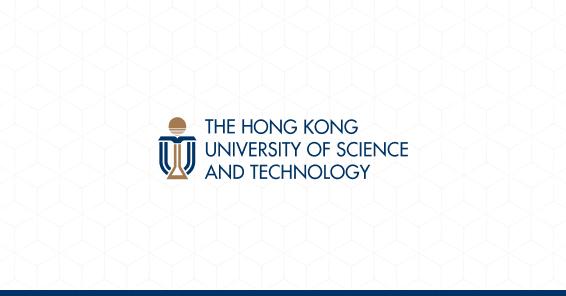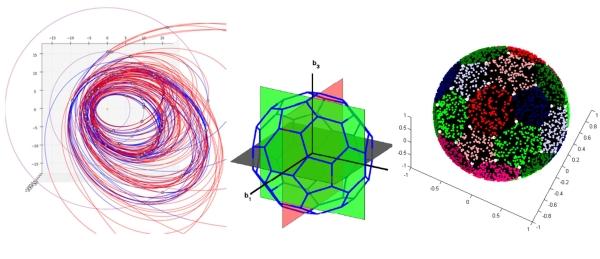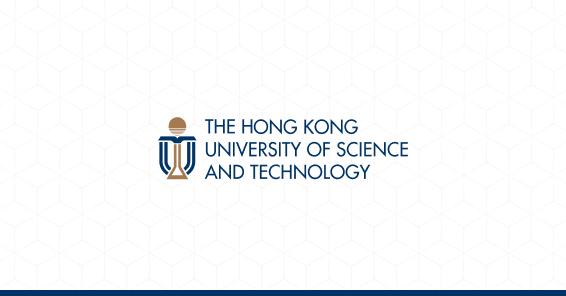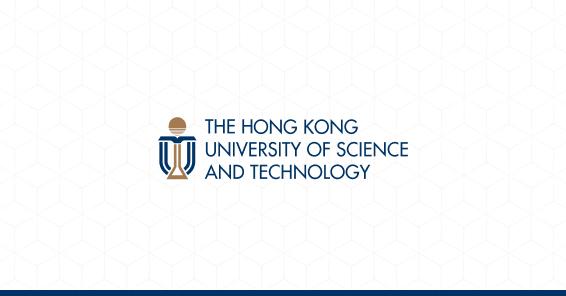News & Events
2013-04-12
UC RUSAL (SEHK: 486, Euronext: RUSAL/RUAL, Moscow Exchange: RUALR/RUALRS), a leading global aluminium producer, and the Hong Kong University of Science and Technology (HKUST) hosted the UC RUSAL President’s Forum today featuring Prof John Ellis, Clerk Maxwell Professor of Theoretical Physics at King’s College London and Physicist at European Organization for Nuclear Research (CERN) to address the most fundamental questions of physics and the cosmos.
At the Forum hosted by Prof Tony F Chan, President of HKUST, the world-renowned British theoretical physicist and Maxwell Medalist Prof John Ellis shared his insights on the prospects of finding the answers posed in Paul Gauguin’s famous paintings: “What are we? Where do we come from? Where are we going?” Putting Gauguin’s questions in the language of particle physics, Prof Ellis asked, “What is matter made of? Why do things weigh? What is the origin of matter? What is dark matter that fills the Universe? How does the Universe evolve? Why is the Universe so big and old? Are there additional dimensions of space?”
Prof Ellis focused on the new particle discovered recently at the Large Hadron Collider (LHC) at CERN, which may be the Higgs boson. He analogized the Higgs boson to a piece missing right in the middle of the giant jigsaw puzzle, the Standard Model which describes all fundamental particle physics. He further explained that the existence of the Higgs boson is extremely significant because without it, there would be no atoms. Electrons would escape at the speed of light, and weak interactions would not be weak. In short, life would be impossible: everything would be radioactive. The Higgs boson provides the masses of elementary particles, making possible the existence of atoms and explaining why human beings do not glow in the dark.
Finding the Higgs boson is one of the most important tasks of CERN’s LHC which is the world’s most powerful particle accelerator and one of the largest scientific experiments ever to address the most fundamental questions of physics and the cosmos. The LHC is also the emptiest space in the solar system and the hottest place in the galaxy, with particle collisions creating temperatures which are a billion times higher than the heart of the sun.
“We physicists try to understand how the Universe became what it is today, what it is made of, what it could become in future. To do that, we use the LHC at CERN to analyze what makes up the Universe,” said Prof Ellis. “Finding the Higgs boson is a quest that brings together scientists from around the world, and we look forward to greater participation by Hong Kong and the region in future.”
HKUST President Tony F Chan stated that it is the University’s honor to have Prof Ellis share with the University community CERN’s latest breakthrough discovery. HKUST had two students participating at CERN’s first rate research last year, and the University is keen to have greater opportunities to collaborate with top-notch laboratories to drive world-changing scientific discoveries.
Prof Ellis graduated from King’s College, Cambridge, in 1971 with a PhD in theoretical high-energy particle physics. After two post-doctoral positions at SLAC (now SLAC National Accelerator Laboratory) and Caltech, he settled in CERN in Geneva and held a permanent contract there from 1978. In 1982 and 2005, Prof Ellis was awarded the Maxwell Medal and the Paul Dirac Prize respectively by the Institute of Physics. He was elected Fellow of the Royal Society of London in 1985 and of the Institute of Physics in 1991, and is an Honorary Fellow of King’s College Cambridge and of the Serbian Physical Society. Having authored nearly 1,000 scientific papers, some with over 50,000 citations, he is the second most-cited theoretical physicist in the world.
Ms Vera Kurochkina, UC RUSAL’s Board Member and Deputy CEO, Director of Corporate Communications, said, “The mission of UC RUSAL President’s Forum is to bring the world’s most inspiring individuals to Hong Kong, to foster exchange of ideas and share exciting insights with the young generation – our pillars of the future. We are honored by the presence of the world renowned Maxwell Medalist, Prof John Ellis. In particular, we are delighted that the forum has received such an enthusiastic response from the local community. We will continue to support and bring the great minds of the world to Hong Kong, so as to strengthen scientific and educational ties between Russia, Mainland China and Hong Kong.”
The UC RUSAL President’s Forum
The UC RUSAL President’s Forum is organized under the auspices of the HKUST Institute for Advanced Study and is held biannually in Hong Kong. Prestigious scholars and scientists as well as successful business leaders and entrepreneurs are invited to share with the audience their views on varied topics including the latest trends in science and technology and its relationship with and impact on humankind, knowledge transfer, entrepreneurship, innovation and creativity. Speakers also engage in a dialogue with the HKUST President. Previous Forum speakers include UC RUSAL CEO Mr Oleg Deripaska, Nobel Laureate in Economic Sciences Prof Christopher Pissarides, then-Chairman of Goldman Sachs Asset Management Dr Jim O’Neill, Chairman of Esquel Group Ms Marjorie Yang and Chairman of Hong Kong Mercantile Exchange Mr Barry Cheung.
About UC RUSAL
UC RUSAL (www.rusal.com) is a leading global aluminium producer, in 2012 accounting for approximately 9% of global production of aluminium and 8% of alumina. UC RUSAL employs about 72,000 people in 19 countries, across 5 continents. UC RUSAL markets and sells its products primarily in the European, Japanese, Korean, Chinese, South East Asian and North American markets. UC RUSAL’s ordinary shares are listed on The Stock Exchange of Hong Kong Limited (Stock code: 486), global depositary shares representing UC RUSAL’s ordinary shares are listed on the professional compartment of Euronext Paris (RUSAL for Reg S GDSs and RUAL for Rule 144A GDSs), and Russian depositary receipts that are issued on common shares of the Company are listed on Moscow Exchange (RUALR/RUALRS).
About the Hong Kong University of Science and Technology
The Hong Kong University of Science and Technology (HKUST) (www.ust.hk) is a top-ranked international research university excelling in science, technology and business as well as humanities and social science. Internationally renowned for its academic rigor and accomplishments, the University promotes interdisciplinary studies and provides holistic education, nurturing well-rounded graduates with a strong entrepreneurial spirit, innovative thinking and relevant skills to thrive in a knowledge economy. As an international university with strong ties to global thought leaders, HKUST has wide-ranging connections with Mainland China while aspiring to be a global premier knowledge hub and a center of research breakthroughs. HKUST was ranked Asia’s number one for the second year in a row in 2012. It was placed third for the world’s under-50 universities in 2012. The Kellogg-HKUST Executive MBA (EMBA) program, for the fourth straight year, topped the Financial Times EMBA global rankings.
Read more
2013-04-08
UC RUSAL (SEHK: 486, Euronext: RUSAL/RUAL, Moscow Exchange: RUALR/RUALRS), a leading global aluminium producer, and the Hong Kong University of Science and Technology (HKUST) invite Prof John Ellis, Clerk Maxwell Professor of Theoretical Physics at King’s College London and Physicist at European Organization for Nuclear Research (CERN) to speak at the UC RUSAL President’s Forum on 12 April 2013.
Hosted by Prof Tony F Chan, President of HKUST, the UC RUSAL President’s Forum will feature the world-renowned British theoretical physicist and Maxwell Medalist Prof John Ellis. He will share insights on the prospects of finding the answers posed in Paul Gauguin’s famous paintings: “What are we? Where do we come from? Where are we going?” In particular, Prof Ellis will focus on the new particle discovered recently at the Large Hadron Collider (LHC) at CERN, which may be the Higgs boson that provides the masses of elementary particles, making possible the existence of atoms.
Prof Ellis pointed out earlier that the Higgs boson has been the hottest pursuit in modern physics. He analogized it to a piece missing right in the middle of the giant jigsaw puzzle, the Standard Model which describes all fundamental particle physics. It was first proposed almost 50 years ago and physicists have been looking for this for 30 years now, and it is one of the most important tasks of the LHC at CERN.
Prof Ellis graduated from King’s College, Cambridge, in 1971 with a PhD in theoretical high-energy particle physics. After two post-doctoral positions at SLAC (now SLAC National Accelerator Laboratory) and Caltech, he settled in CERN in Geneva and held a permanent contract there from 1978. CERN’s Large Hadron Collider (LHC) is the world’s most powerful particle accelerator and one of the largest scientific experiments ever, which tries to address the most fundamental questions of physics and the cosmos.
Prof Ellis’ research interests focus on the phenomenological aspects of elementary particle physics with important contributions to astrophysics, cosmology and quantum gravity. A substantial part of his extensive work relates directly to experiment: interpreting results of searches for new particles and exploring the physics that could be done with future accelerators. He is accredited with being one of the pioneers of particle astrophysics: the interface between particle physics and cosmology. He has authored nearly 1,000 scientific papers, some with over 50,000 citations. He is the second most-cited theoretical physicist in the world and is currently very active in efforts to understand the Higgs-like particle discovered recently at CERN.
In 1982 and 2005, Prof Ellis was awarded the Maxwell Medal and the Paul Dirac Prize respectively by the Institute of Physics. He was elected Fellow of the Royal Society of London in 1985 and of the Institute of Physics in 1991, and is an Honorary Fellow of King’s College Cambridge and of the Serbian Physical Society.
The UC RUSAL President’s Forum featuring Prof John Ellis will take place at 3.00pm on 12 April 2013 (Friday) at Lam Woo Lecture Theater (LT-B) of HKUST. For more details, please visit: http://ias.ust.hk/ucrusal/.
The UC RUSAL President’s Forum
The UC RUSAL President’s Forum is organized under the auspices of the HKUST Institute for Advanced Study and is held biannually in Hong Kong. Prestigious scholars and scientists as well as successful business leaders and entrepreneurs are invited to share with the audience their views on varied topics including the latest trends in science and technology and its relationship with and impact on humankind, knowledge transfer, entrepreneurship, innovation and creativity. Speakers also engage in a dialogue with the HKUST President. Previous Forum speakers include UC RUSAL CEO Mr Oleg Deripaska, Nobel Laureate in Economic Sciences Prof Christopher Pissarides, then-Chairman of Goldman Sachs Asset Management Dr Jim O’Neill, Chairman of Esquel Group Ms Marjorie Yang and Chairman of Hong Kong Mercantile Exchange Mr Barry Cheung.
About UC RUSAL
UC RUSAL (www.rusal.com) is a leading, global aluminium producer, in 2012 accounting for approximately 9% of global production of aluminium and 8% of alumina. UC RUSAL employs about 72,000 people in 19 countries, across 5 continents. UC RUSAL markets and sells its products primarily in the European, Japanese, Korean, Chinese, South East Asian and North American markets. UC RUSAL’s ordinary shares are listed on The Stock Exchange of Hong Kong Limited (Stock code: 486), global depositary shares representing UC RUSAL’s ordinary shares are listed on the professional compartment of Euronext Paris (RUSAL for Reg S GDSs and RUAL for Rule 144A GDSs), and Russian depositary receipts that are issued on common shares of the Company are listed on Moscow Exchange (RUALR/RUALRS).
About the Hong Kong University of Science and Technology
The Hong Kong University of Science and Technology (HKUST) (www.ust.hk) is a top-ranked international research university excelling in science, technology and business as well as humanities and social science. Internationally renowned for its academic rigor and accomplishments, the University promotes interdisciplinary studies and provides holistic education, nurturing well-rounded graduates with a strong entrepreneurial spirit, innovative thinking and relevant skills to thrive in a knowledge economy. As an international university with strong ties to global thought leaders, HKUST has wide-ranging connections with Mainland China while aspiring to be a global premier knowledge hub and a center of research breakthroughs. HKUST was ranked Asia’s number one for the second year in a row in 2012. It was placed third for the world’s under-50 universities in 2012. The Kellogg-HKUST Executive MBA (EMBA) program, for the fourth straight year, topped the Financial Times EMBA global rankings.
Read more
2013-01-28
Prof Tianshou Zhao, Chair Professor of Mechanical Engineering and Director of Center for Sustainable Energy Technology, and Prof Qian Zhang, Professor of Department of Computer Science and Engineering at the Hong Kong University of Science and Technology (HKUST) were recognized with the most prestigious awards in science and technology in China – State Natural Science Award (Second Class) bestowed by the State Council of the People’s Republic of China. Another research project “Discovery and investigation of novel magnetocaloric effect materials” by Prof Xixiang Zhang, a former professor and now an Adjunct Professor at HKUST’s Physics Department, and the research team from the Institute of Physics Chinese Academy of Sciences also won the State Natural Science Award (Second Class).
The State Science and Technology Awards (SSTAs) are China’s most prestigious honor in science and technology. They are conferred by the State Council of the People’s Republic of China on outstanding individuals and institutions for their significant contributions to the development of science and technology. The State Natural Science Award is one of the categories under SSTAs.
As a world-class research university, HKUST is committed to scientific and technological advancement in various disciplines. With major breakthroughs in a wide range of scientific pursuits, the award demonstrates HKUST faculty’s breadth of research talents and their outstanding performances.
“Investigations of multi-scale and multi-physics field coupled fluid flow and heat/mass transfer in complex systems” by Prof Tianshou Zhao
Through the Overseas Outstanding Scholars Project of National Natural Science Foundation of China and other collaborative projects, Prof Tianshou Zhao and researchers from the School of Energy and Power Engineering, Xi’an Jiaotong University, have conducted collaborative research over the past decade. By the unique research methodology and strategy with integration of experimental observations, theoretical investigations, and computational modeling, the team made significant contributions in the field of heat/mass transfer in complex systems. The main breakthrough in this project is the construction of a framework that describes multi-scale and multi-physics field coupled fluid flow and heat/mass transfer processes by creating and using microscopic, mesoscopic and macroscopic theoretical and numerical approaches. Multi-scale and multi-physics field coupled fluid flow and heat/mass transfer problems are frequently encountered in many complex practical systems including energy, power, chemical, environmental, and biomedical processes and systems. The outcome resulting from the project is particularly important in improving the energy efficiency and reducing greenhouse gas emissions of energy conversion systems.
“Models for Joint Wireless Multimedia Communication and Performance Optimization” by Prof Qian Zhang
Prof Zhang and her partners from the Tsinghua University conducted collaborative research from 1998 to 2008. Starting from the fundamental nature of the wireless multimedia communication, the team revealed the interaction between the structured nature of multimedia information and the dynamic characteristics of the error distribution in wireless networks, established the modeling methodology and performance evaluation theory for multimedia processing and joint optimization in wireless network, made significant contributions to the development of the basic theory for wireless multimedia communication. The project made a major breakthrough in efficient video communications under the discontinuous transmission conditions, and effectively increasing bandwidth efficiency. The outcome resulting from the project is particularly useful for the design of future wireless video, mobile multimedia systems, as well as next-generation wireless networks.
Read more
2012-12-10
A team comprising faculty and students in the School of Science made a splash of colors in its first ever Global Trajectory Optimization Competition (GTOC), where it landed in second place ahead of 32 contesting teams from the US, Germany, Russia, Mainland China and others. The solution is set to provide insights for the major space mission to the Jovian system by the National Aeronautics and Space Administration (NASA) and European Space Agency (ESA) in 2020.
This year, the participating teams were tasked with the design of a space orbit that achieves maximum coverage of the Galilean moons of Jupiter, including Io, Europa, Ganymede and Callisto. The Galilean moons have long been a subject of sustained scientific interest due to the hypothesis of a liquid ocean existing under the Europa’s icey surface which may serve as an abode for extraterrestrial life. Meeting time, fuel, mass and check-point criteria, the teams were to map in proximity the 32 stipulated regions over the surfaces of the four moons in the most optimal fashion.
The HKUST team comprises Prof Kwing-lam Chan, Professor of the Department of Mathematics and Director of Center for Space Science Research, Prof Kwok-yee Wong, Professor of the Department of Physics, Dr Chit-hong Yam, consultant of the Center for Space Science Research, as well as four second year undergraduate students including Tsz-yan So of the Department of Mathematics, Kai-yin Leung, Kin-chiu Chu and Heimonen, Hermanni Juuso Elias of the Department of Physics. In collaboration with ESA, the team made use of handy and comprehensive orbit calculation methods and devised its own program based on heuristic algorithms, making sure the orbit satisfied all requirements of the Competition. With 141 close encounters at the moons of Jupiter, the joint team scored 308 and clinched the second place with the honor of having visited most of the spots, missing the winning team from Italy by mere 3 marks.
Prof Nancy Ip, Chair Professor and Dean of Science said, “All the student participants were in their first year of study at the time of the competition. Yet, despite being confronted with an unfamiliar topic, and competing with other high-caliber contestants, they used their combined knowledge in mathematics and physics effectively while showing remarkable resilience to reap their well-deserved reward. Furthermore, the team displayed an impeccable team spirit by encouraging each other on to rise above the odds. These are the essential qualities required to be successful in science and technology research. It is our goal at the School to foster the growth of our students to help them realize their full potential.” Despite this being their first time participating in the competition where world-class masters converge from all over the world, HKUST students which were then in their first year have come under excellent tutelage of faculty and advisors through Undergraduate Research Opportunities Program (UROP) and swiftly mastered the principles and techniques of space orbit designs in just one summer. Interdisciplinary thinking aside, their excellent analytical and problem-solving skills plus seamless teamwork are key to this impressive achievement.
The GTOC teams were invited to a workshop in the US and engage in a fruitful dialogue with other participants on their experience of the designing space orbit. They also toured the state-of-the-art research facilities of NASA at Caltech, gaining a deeper appreciation of what first-class aerospace technology entails.
Now in its 6th year, GTOC opens every one or two years with an aim to raising the standard of space orbit design and provide a platform for world’s best researchers and engineers to get together and exchange ideas on the latest trends and technologies in the field. For years, it has elicited enthusiastic participation from experts of all quarters, who are eager to hone their skills and enhance understanding through joining this intense competition. Hosted this year by NASA’s Jet Propulsion Laboratory, GTOC gathered the world’s top aerospace engineers and challenged them to come up with solutions to a highly complex problem of interplanetary trajectory design within a month.
Reference Materials:
Presenations:
/press_release_archive/eng/news/photos/20121210-1004-GTOC_Poster-1.pdf
/press_release_archive/eng/news/photos/20121210-1004-gtoc6_act_hkust_hippo_v3.pdf
/press_release_archive/eng/news/photos/20121210-1004-gtoc6_act_hkust_MichaelWong_v2.pdf
Video link:
https://www.youtube.com/watch?edit=vd&v=fs3hCDZ8Kno
Read more
2012-10-23
The School of Science at the Hong Kong University of Science and Technology (HKUST) and Roche co-hosted the launch of the first Roche Young Scientist Award (RYSA) yesterday. The initiative aims to foster curiosity, creativity, and passion for science in the youth of Hong Kong by challenging them to apply their science knowledge towards improving human lives.
As co-organizer of the event, Prof Nancy Ip, Dean of Science of HKUST, is pleased to give the School’s full support to this meaningful event, “We believe that scientific breakthrough is the gear for further advancement of society. Therefore, nurturing science talent and promoting the innovative spirit in science is always at the heart of our curriculum. HKUST and Roche have the same vision in recognizing scientific excellence, and we are delighted to have the opportunity to play a leading role in developing and enhancing the scientific interests of today’s youth. By co-organizing this event, we aim to provide a platform for our young generation to discover their potential while exploring new possibilities, and showcase their talent to the public.”
Local students between the ages of 13 and 16 are invited to participate in the RYSA, as a team consisting of one to three students. Each team is required to submit a proposal (of not more than 800 words) detailing a research or an invention to address a health issue. Twenty-five teams will be short-listed in the first round and ten in the final round. Furthermore, more than 20 undergraduate science students from HKUST have been invited to mentor the short-listed teams. They will share key scientific approaches used to address problems, and provide guidance to the teams to improve the effectiveness and practicality of their proposals.
“As a leading global healthcare company that is innovation-driven, and uniquely positioned with pharmaceuticals and diagnostics under one roof, we are extremely pleased to launch RYSA, a meaningful initiative and the first of its kind in Hong Kong which emphasizes innovation and creativity while addressing the shared concern of health issues,” said Mr Johnny Tse, General Manager of Roche Diagnostics (Hong Kong) Limited.
The School of Science at HKUST has established numerous collaborations with industrial partners through research and professional exchanges. Our undergraduate students also have opportunities to extend their horizons beyond the classroom. Students are involved in different collaborative projects offering exposure to research opportunities and practices in industry.
“We are glad to have the support of HKUST’s School of Science, which is well-known for its outstanding research and science education. We have a shared vision of developing initiatives of this kind into a long-term nurturing ground for our future scientists,” said Mrs. Rachel Frizberg, General Manager of Roche Hong Kong Limited.
All participants of RYSA will be invited to join a seminar and briefing session in November. A guest speaker, Prof Leung Pak Wo from the Physics Department of HKUST will share his insights through the topic of “Science, Research and Fun”, which will be followed by a campus and laboratory tour.
Read more
2012-10-11
A research team led by Prof Yilong Han at the Department of Physics of the Hong Kong University of Science and Technology (HKUST) has for the first time successfully observed homogeneous melting at single-particle resolution, closing the long-term debate on alleged defects generated before melting. In addition to this, Prof Han and his team members Ziren Wang, Feng Wang, Yi Peng and Zhongyu Zheng also measured the superheat limit of colloidal crystals for the first time. All of these discoveries have been published in the latest issue of Science, one of the world’s most prestigious scientific journals.
Crystal melting is a common phenemenon in nature, the conversion between ice and water being an everyday example. Notwithstanding the commonness, its microscopic mechanism remains poorly understood. The formation of liquid nucleus at the initial stage of phase change is crucial to the whole melting process, but its kinetics are difficult to measure because individual atoms or molecules are too small, moving too fast and difficult to observe in bulk. To explicate this phenomenon, micrometer-sized colloids have been used as ‘big atoms’ to simulate the more minutiae atomic systems because they demonstrate similar phase behaviors. For instance, colloidal particles can form crystals such as the gemstone opal. As such, researchers can directly observe colloidal particles’ thermal motions under optical microscope and track their trajectories using image processing.
On the other hand, achieving homogeneous melting is another long-standing challenge facing the scientific community, because crystals always melt from surfaces or defects once they are heated to the melting point. If surface melting is surpressed in a perfect crystal, the crystal can be superheated above its melting point and this will lead to homogenous melting. Prof Yilong Han and his research group cleverly focused a beam of light into a high-quality colloidal crystal to achieve the superheated state and investigated homogeneous melting at single particle resolution for the first time. They observed that liquid nuclei are developed from strong vibrating regions associated with loop motions of particles. Particles swap their positions but preserve the crystalline structure, hence the melting precursors are not any type of defects predicted in past theories. The research team also measured for the first time a colloidal crystal can be superheated 20% above the melting point at most, a result similar to that of metals.
Prof Han said, “We conducted a series of comprehensive measurements on nucleation dynamics, which revealed deviations from the Classical Nucleation Theory. These discoveries deepen the understanding of microscopic processes in homogeneous nucleation and provide crucial experimental input to help guide any future refinement of theories for homogenous nucleation. In the meantime, our experimental system also provides a unique foundation to the study of solid-solid transitions and effects of a single defect or impurity on the melting transitions, which are of foundamental importance in materials physics.”
Prof Yilong Han joined the Department of Physics at HKUST as an Assistant Professor in 2007. He obtained the bachelor degree from Peking University and doctoral degree from the University of Chicago, and did postdoctoral research at the University of Pennsylvania in the US.
Read more
2012-08-01
Prof. Sou received the award for his invention of wireless UV flame detectors for fire-safety application. This invention provides a MgS solar-blind UV detector with cutoff wavelength at 250 nm, a wireless sensor network and an iPhone Apps as user interface, all together could offer a device capable to handle wireless flame sensing for fire-safety applications.
Read more
